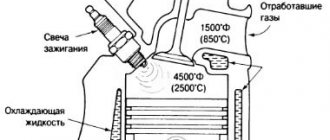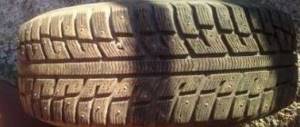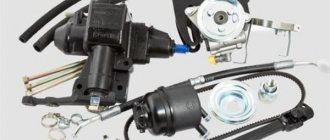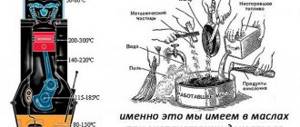Why pour special fluid into the power steering?
The main task of the hydraulic booster is to make the steering wheel “easier” for the driver, so that he can drive the car more comfortably. Without a special power steering fluid, it will not be able to work, since during the operation of the system, the fluid is driven through all its components.
You can say that oil is poured into the power steering, and there will be some truth in this. Indeed, the fluid for this mechanism is formed on the basis of oil, but it contains a number of special additives, and ordinary motor oil should not be poured into the power steering tank.
The fluid in the power steering performs a number of tasks standard for automobile oil:
- Cools parts rubbing against each other, removing heat from them and preventing overheating;
- Lubricates the parts included in the system;
- Protects system elements from corrosion.
The main function of the fluid in the power steering is to transfer forces from the pump to the piston, which allows the system as a whole to operate.
Purpose and properties of hydraulic booster oils
The oil in the power steering system performs several functions:
- lubricating
- protective,
- anti-corrosion,
- transport (transfers energy from the pump to the rail).
This set of functions is typical for another component of some modern cars - automatic transmission. Therefore, today some cars, especially those made in Asia, are designed in such a way that the same oil is used for automatic transmission and power steering.
Working fluids for power steering are divided into:
- mineral,
- synthetic.
Most cars today use mineral power steering fluids with a special set of additives. Synthetic oils for power steering are also used, but less frequently. This is due to the peculiarity of the material of the rack seals, which are quickly destroyed in the aggressive environment of synthetic oils.
Only the type of fluid prescribed by the car manufacturer can be used as a base oil in power steering. Deviation from this rule will lead to rapid depressurization of the rack.
Also, car enthusiasts often divide liquids by color - red, yellow and green. According to this “rule,” it is only allowed to mix formulations of the same color or red oils with yellow ones. This principle exists, but it is not 100% correct. For example, green liquids can be created on both a mineral and a synthetic base, so there is no need to talk about their interchangeability.
Functions of power steering fluid
The functioning of the hydraulic power steering system (hereinafter referred to as power steering) not only in passenger cars, but also in trucks, is impossible without the use of special lubricant, which performs an essential function. To figure out what kind of fluid to pour into the power steering, you need to understand what it is used for and how this unit generally works.
The hydraulic booster installed on the vehicle allows the person behind the wheel to exert a minimum of effort to control the car. What elements does this system consist of? First of all, this is a liquid pump driven by the engine crankshaft, pipelines, a control mechanism and a power actuator. The control unit is made in the form of a distributor connected to a rack or steering wheel. It allows you to control the flow of lubricant by changing the direction and angle of rotation of the steering wheel. The actuator is made in the form of a rack or steering mechanism with a bipod.
The fluid that can be poured into the power steering must meet the following requirements:
- Transfer the force from the power steering pump to the actuator, which allows you to control the wheels of the car and turn it.
- Lubricate the rubbing surfaces of the power steering system.
- Protect metal parts from rust formation.
- Do not allow the rubbing elements of the system to overheat.
The above characteristics only have a special fluid that is intended for use in the power steering system. It has specific properties that will be described below.
Composition of power steering fluid
The composition of oils in hydraulic boosters is quite typical in structure for technical fluids. Base (mineral or synthetic oil) with additives that ensure the performance and safety of the oil itself. In this, all technical oils are similar.
Oils can be mineral or synthetic based. The main advantage of mineral water is its low cost. Additives also dissolve in them better than in some (not the most expensive) synthetics. Synthetics are much more resistant to destruction factors (thermal, chemical, mechanical) and, in addition, have a much higher viscosity index (i.e., viscosity changes less with temperature changes, see the article on oil viscosity for details)
Additives:
- anti-wear, extreme pressure
- viscosity modifiers
- antioxidant
- anti-corrosion
- anti-foam
- additives that protect rubber bands in the system.
There are also coloring additives, but they can hardly be called additives, since they do not affect the functional properties of the oil in any way. Their only purpose is to facilitate leak detection.
Synthetics
These are high-tech liquids, in the production of which the most modern developments and additives are used. Oil fractions for synthetics are purified by hydrocracking. Polyesters, polyhydric alcohols and sets of additives give them outstanding characteristics: a wide range of operating temperatures, stable oil film, long service life.
The main reason why synthetic-based hydraulic fluid cannot be poured into power steering intended for mineral ones is its aggressive effect on rubber products, of which there are many in the hydraulic booster. Where synthetics are used, the rubber has a completely different composition and is made on a silicone basis.
Semi-synthetics
A mixture of synthetic and mineral oils, due to which the latter receive significant improvements in performance: reduced foaming, fluidity, heat dissipation.
Semi-synthetic fluids include such well-known fluids as: Zic ATF Dex 3, Comma PSF MVCHF, Motul Dexron III and others.
Mineralka
Mineral-based oils contain petroleum fractions (85-98%), the rest are additives that improve the performance of the hydraulic fluid.
They are used in hydraulic boosters containing seals and parts based on ordinary rubber, since the mineral component is neutral and is not harmful to rubber products, unlike synthetics.
Mineral power steering fluids are the most inexpensive, but they also have a short service life. Mobil ATF 320 Premium is considered a good mineral oil; Dexron oils up to and including the IID marking were also mineral.
Why is it necessary to add fluid to this system?
The answer is obvious: to make the steering wheel “light”. This gives even greater comfort when driving the car. However, technically it is so provided that you cannot do without a special liquid for gur. It is distributed throughout the entire system and enables high-quality functioning of the mechanisms.
Many drivers say not power steering fluid, but oil. They are partly right. The entire composition of gur is based on oil, to which chemicals are added. It is important to know that motor oil is not suitable for these purposes.
Gur liquid is an important component that is designed to perform a number of functions
- Cooling of parts that heat up during friction.
- Lubrication of power steering system elements.
- Protection of mechanisms from rust.
But the main task performed by the power steering fluid is to “lighten” the steering wheel. Due to the action of the oil, the forces from the pump to the piston are better transmitted, and the system works perfectly.
Types of power steering fluids
Unfortunately, car manufacturers have not been able to agree on the use of a universal fluid for hydraulic steering, so we have some variation in the types.
Firstly, automatic transmission oil is most firmly entrenched in the minds of motorists, and therefore in the power steering systems. This, in general, is not as surprising as it might seem at first glance, since ATF (Automatic Transmission Fluid) is essentially the same hydraulic fluid with similar characteristics, except that they are raised “plus” relative to power steering fluids (in automatic transmission conditions the work is still tougher than in power steering).
But there is also a difference, namely: the presence of a friction additive in ATPs, which increases friction for better adhesion of the clutches. And this is not very good for power steering, where additional friction is not needed. True, these additives interact well precisely with the materials of the friction clutches, which, of course, are not present in the hydraulic booster. Therefore, the Japanese, in particular (and besides them the Chinese, Koreans, and some Europeans (Renault, for example, Opel)), often recommend pouring ATF into their power steering.
Secondly, ATPs also differ from each other, and quite strongly, since different automatic transmission designs require different oil performance. We will not consider here various special ATPs created for special boxes according to the specifications of the car manufacturer (Mercedes, BMW, etc.). All these fluids are much more expensive than universal ones, and power steering is no better. So two types of ATP are relevant for us now:
- ATF Dexron II - mineral oil
- ATF Dexron III - synthetic
This is interesting: Maintenance of Hyundai Solaris - maintenance regulations, list of works, cost, part numbers
Synthetics, accordingly, are more expensive and retain their properties longer, but, according to some data, they are more aggressive towards rubber bands.
The second type of power steering fluids are special compounds under the general name PSF (Power Steering Fluid). It is possible that the additive packages are somehow super optimally selected, there is nothing extra like friction additives, but in fact this is rather a marketing ploy designed to increase the number of items sold “in one hand.” Otherwise, as already mentioned, many automakers would not recommend ATF in power steering with peace of mind.
What kind of fluid to pour into the power steering
As we noted above, the actual power steering fluid is oil, which means that it can be classified in a standard way into mineral and synthetic.
But if you own a passenger car, then you are unlikely to need synthetic power steering oil. In most cases, it is used on technical vehicles, while mineral power steering fluid is poured into city cars. It is quite simple to explain why mineral oil is poured into the power steering reservoir - it easily performs all the tasks assigned to it, while allowing not only metal parts to avoid corrosion, but also the rubber elements of the system from drying out. As for synthetic oil, it can only be poured into the power steering reservoir if recommended by the car manufacturer. This is due to the fact that such a liquid contains rubber fibers, which lead to cracks in the rubber components of the steering system.
Signs of a power steering fluid leak
No system is immune from breakdowns. In the case of a hydraulic booster, this is most often accompanied by a power steering oil leak. This can be noticed by several signs:
- The most obvious sign is a decrease in the fluid level in the tank. Since no “waste” consumption is provided for in the power steering, a decrease in the amount of oil means that it simply leaks away.
- Another sign is the buzzing of the power steering in extreme steering positions and when starting the car in cold weather. This sound means that there is absolutely little oil in the system and is no longer enough to fully lubricate the pump. In a good way, you shouldn’t let it get to this point, but if you suddenly hear it, immediately top up the level and look for the leak.
- Also a sign of a leak can be a knocking sound in the steering wheel, or turning the steering wheel more tightly than usual.
- Leaks can be detected visually, at the joints of tubes and seals.
Often a hole occurs on high-pressure metal pipes as a result of their friction against other structural elements. This is a common occurrence with poorly built/designed machines. A slight contact of a tube with another tube/engine/body, or with any piece of hardware + normal vibrations of a running car, and here we have friction that lasts for months (usually a few months of hard driving is enough). High pressure adds pressure, and as a result we have a hole.
This is interesting: Basic methods for replacing a license plate light bulb on a car
Another place where you need to look first is the seals of the power steering pump and the rack drive housing or steering gear housing (who has what). In a pump, the shaft seal or gasket usually wears out (the power steering consists of two halves secured with bolts). In the rack/crankcase, depending on the design, oil may flow through the piston, also due to its wear.
What are the differences between power steering fluids?
Any automotive fluid has a number of basic parameters that affect its price and properties. The main characteristics for power steering fluid are as follows:
- Properties of additives that are in its composition;
- Hydraulic and mechanical properties;
- Viscosity.
When choosing power steering fluid, you should look at these parameters, focusing on the ideals recommended by the car manufacturer.
What color should the power steering fluid be?
Another important parameter of the steering fluid is its color. On sale you can find the liquid in 3 colors: green, yellow and red. It is important to note here that power steering fluids of the same color can be mixed with each other. There is an important rule: never mix mineral and synthetic oils, this also applies to power steering fluids.
We suggest you familiarize yourself in more detail with the differences between steering fluids of different colors:
- Red . This color indicates that this fluid (in most cases) is used for automatic transmissions. It can be either mineral or synthetic, and when purchasing red oil, it is important to check this parameter. You can mix red power steering fluid with yellow, but not with green.
- Yellow . This is a universal power steering fluid that can be found in automatic and manual transmissions. As noted above, yellow oil allows for miscibility with the red variation.
- Green . Green power steering fluid can only be poured into cars with a manual transmission. It cannot be mixed with oils of other colors.
The parameters of viscosity, the presence of additives and other properties differ minimally between power steering fluids of the same color. That is why, when buying oil to add to the power steering reservoir, first of all, you need to look at its color, and not at other indicators.
Why you can’t save money when choosing power steering fluid
When choosing power steering fluid, you should pay attention to well-known manufacturers of car accessories. It is better to purchase such consumables in specialized stores for car enthusiasts, since they directly affect traffic safety. Low-quality power steering fluid may have the following disadvantages:
- Loss of properties at elevated temperatures. During operation, the power steering fluid on some cars “heats up” above 100 degrees Celsius. Oil with poor quality additives may begin to coagulate at such high temperatures that it will cause difficulty turning the steering wheel. Particularly low-quality power steering fluids can completely damage the power steering at high temperatures. In such a situation, the steering will continue to work, but after that the driver will have to repair the power steering elements;
- Release of hazardous fumes for vehicle occupants. The amount of chemical reagents mixed into power steering fluid is no less than in car additives. At elevated temperatures, power steering fluid emits vapors that can be hazardous to the health of passengers. If you purchase such oils in specialized stores and from trusted brands, you don’t need to worry about harmful vapors, while in an effort to save money when purchasing secondhand, you can end up with a liquid containing harmful or even dangerous elements.
The driver has to replace and top up power steering fluid infrequently, and the savings on it are even less justified. Buy oils with additives that are produced by well-known companies that have all the necessary certificates for the production of such consumables.
( 395 votes, average: 4.48 out of 5)
Expiration date and storage rules for motor oil
Liquid glass for cars
Related Posts
How does power steering work?
Power steering (power steering) is a device that, due to fluid pressure, provides additional force when turning the steering wheel. In modern cars, power steering has become an integral element of comfort. It makes turns, turns and other maneuvers easier. Thanks to the hydraulic booster, the driver does not have to make 5–6 full turns of the steering wheel in the direction of the turn. The role of this device especially increases when performing maneuvers in narrow places and when parking a car.
In addition, power steering makes it possible to soften the impacts that occur when the front wheels hit various uneven road surfaces. This feature ensures vehicle controllability on difficult roads.
What requirements must the power steering meet in order to effectively cope with its functions? We list the most important of them:
- trouble-free and silent operation;
- simple and compact design with easy maintenance;
- manufacturability and safety from an environmental point of view;
- minimum turning torque on the wheel and automatic return of the steering wheel to the middle position;
- smooth turning of the steering wheel with little effort;
- kinematic control of the angles of rotation of the drive wheels and steering wheel;
- ensuring the necessary control of the proportionality of steering forces and the forces of resistance to turning of the drive wheels;
- maintaining the ability to drive the car if the power steering system malfunctions.
The unit we are considering can be installed on the steering of any type of car. Before we figure out how to replace the fluid in the power steering, we list the main elements of the rack and pinion steering mechanism, which is most often used in modern cars:
- power steering fluid expansion tank;
- pump;
- spool valve;
- hydraulic cylinder;
- connecting hoses.
The power steering fluid reservoir is equipped with a filter and a dipstick that allows you to monitor the oil level. The power steering fluid provides lubrication of the rubbing pairs and transmits the force created by the pump to the hydraulic cylinder. The filter element (mesh) cleans the oil from chips that may appear during operation of the unit.
If the reservoir for power steering fluid is made of transparent plastic, then its level can be monitored visually. Otherwise, a special probe is used.
We recommend
“Power steering fluid level: how to check and top up” More details
Depending on the car model, to check the oil level in the power steering system, you may need to briefly run the engine or rotate the steering wheel from side to side while the engine is idling.











